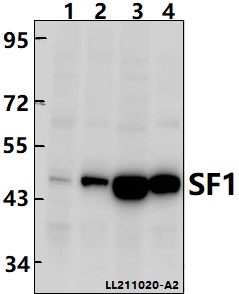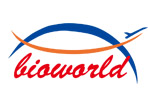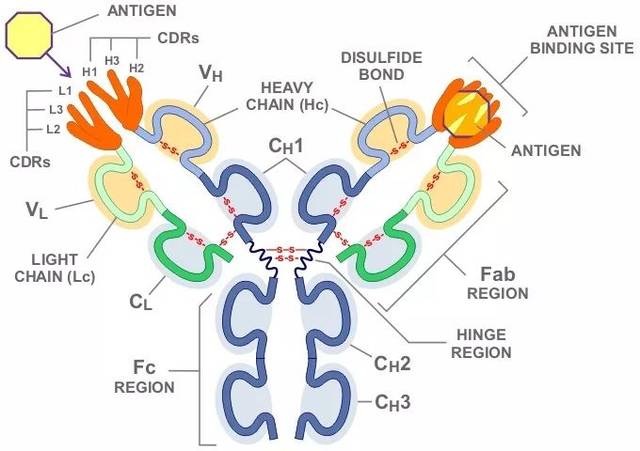Product Name :
SF1 polyclonal antibody Background :
The orphan nuclear receptor, steroidogenic factor 1 (STF-1, also called Ad4BP), is encoded by the NR5A1 gene and plays an instrumental role in directing the transcriptional control of steroidogenesis. Initially identified as a tissue-specific transcriptional regulator of cytochrome P450 steroid hydroxylases, research studies of both global and tissue-specific knockout mice have demonstrated that STF-1 is required for the development of adrenal glands, gonads, ventromedial hypothalamus, and for the proper functioning of pituitary gonadotropes. Indeed, humans with mutations that render STF-1 transcriptionally inactive can present with testicular failure, ovarian failure, and adrenal insufficiency. Furthermore, dysregulation of STF-1 has been linked to diseases such as endometriosis and adrenocortical carcinoma. Like other nuclear hormone receptors, STF-1 has a modular domain structure composed of an amino-terminal zinc finger DNA-binding domain, a ligand-binding domain, a carboxy-terminal AF-2 activation domain, and a hinge region with AF-1-like activation activity. STF-1 also contains a fushi tarazu factor 1 box, which functions as an accessory DNA binding domain. STF-1 is primarily phosphorylated at Ser203, which is thought to enhance its transcriptional activity by promoting complex formation with transcriptional cofactors. In addition to phosphorylation at Ser203, STF-1 is subject to SUMO conjugation and acetylation at ε-amino groups of target lysine residues. Whereas SUMOylation represses STF-1 function, acetylation enhances its transcriptional activity. Product :
Rabbit IgG, 1mg/ml in PBS with 0.02% sodium azide, 50% glycerol, pH7.2 Storage&Stability :
Store at 4°C short term. Aliquot and store at -20°C long term. Avoid freeze-thaw cycles. Specificity :
SF1 polyclonal antibody detects endogenous levels of SF1 protein. Immunogen :
Synthetic peptide, corresponding to Human SF1. Conjugate :
Unconjugated Modification :
Unmodification
SF1 polyclonal antibody Background :
The orphan nuclear receptor, steroidogenic factor 1 (STF-1, also called Ad4BP), is encoded by the NR5A1 gene and plays an instrumental role in directing the transcriptional control of steroidogenesis. Initially identified as a tissue-specific transcriptional regulator of cytochrome P450 steroid hydroxylases, research studies of both global and tissue-specific knockout mice have demonstrated that STF-1 is required for the development of adrenal glands, gonads, ventromedial hypothalamus, and for the proper functioning of pituitary gonadotropes. Indeed, humans with mutations that render STF-1 transcriptionally inactive can present with testicular failure, ovarian failure, and adrenal insufficiency. Furthermore, dysregulation of STF-1 has been linked to diseases such as endometriosis and adrenocortical carcinoma. Like other nuclear hormone receptors, STF-1 has a modular domain structure composed of an amino-terminal zinc finger DNA-binding domain, a ligand-binding domain, a carboxy-terminal AF-2 activation domain, and a hinge region with AF-1-like activation activity. STF-1 also contains a fushi tarazu factor 1 box, which functions as an accessory DNA binding domain. STF-1 is primarily phosphorylated at Ser203, which is thought to enhance its transcriptional activity by promoting complex formation with transcriptional cofactors. In addition to phosphorylation at Ser203, STF-1 is subject to SUMO conjugation and acetylation at ε-amino groups of target lysine residues. Whereas SUMOylation represses STF-1 function, acetylation enhances its transcriptional activity. Product :
Rabbit IgG, 1mg/ml in PBS with 0.02% sodium azide, 50% glycerol, pH7.2 Storage&Stability :
Store at 4°C short term. Aliquot and store at -20°C long term. Avoid freeze-thaw cycles. Specificity :
SF1 polyclonal antibody detects endogenous levels of SF1 protein. Immunogen :
Synthetic peptide, corresponding to Human SF1. Conjugate :
Unconjugated Modification :
Unmodification
-
 Western blot (WB) analysis of SF1 polyclonal antibody at 1:1000 dilution Lane1:Hela whole cell lysate(40ug) Lane2:HepG2 whole cell lysate(40ug) Lane3:HEK293T whole cell lysate(40ug) Lane4:U-87MG whole cell lysate(40ug)
Western blot (WB) analysis of SF1 polyclonal antibody at 1:1000 dilution Lane1:Hela whole cell lysate(40ug) Lane2:HepG2 whole cell lysate(40ug) Lane3:HEK293T whole cell lysate(40ug) Lane4:U-87MG whole cell lysate(40ug)
Bioworld Biotech only provide peptides for our antibodies and do not provide additional peptide customization services.
Price/Size :
USD 368/1mg/vial
Tips:
For phospho antibody, we provide phospho peptide(0.5mg) and non-phospho peptide(0.5mg).Describe :
Blocking peptides are peptides that bind specifically to the target antibody and block antibody binding. These peptide usually contains the epitope recognized by the antibody. Antibodies bound to the blocking peptide no longer bind to the epitope on the target protein. This mechanism is useful when non-specific binding is an issue, for example, in Western blotting (WB) and Immunohistochemistry (IHC). By comparing the staining from the blocked antibody versus the antibody alone, one can see which staining is specific; Specific binding will be absent from the western blot or IHC performed with the neutralized antibody.Formula:
Synthetic peptide was lyophilized with 100% acetonitrile and is supplied as a powder. Reconstitute with 0.1 ml DI water for a final concentration of 10 mg/ml.The purity is >90%,tested by HPLC and MS.
Storage:
The freeze-dried powder is more stable. For short time at 2-8°C. For long term storage store at -20°C.
Note :
This product is for research use only (RUO only). Not for use in diagnostic or therapeutic procedures.
 SF1 polyclonal antibody
SF1 polyclonal antibody  Datasheet
Datasheet COA
COA MSDS
MSDS SHIP
SHIP